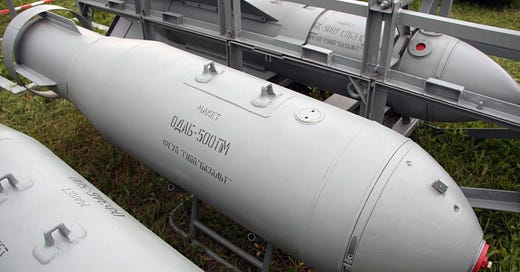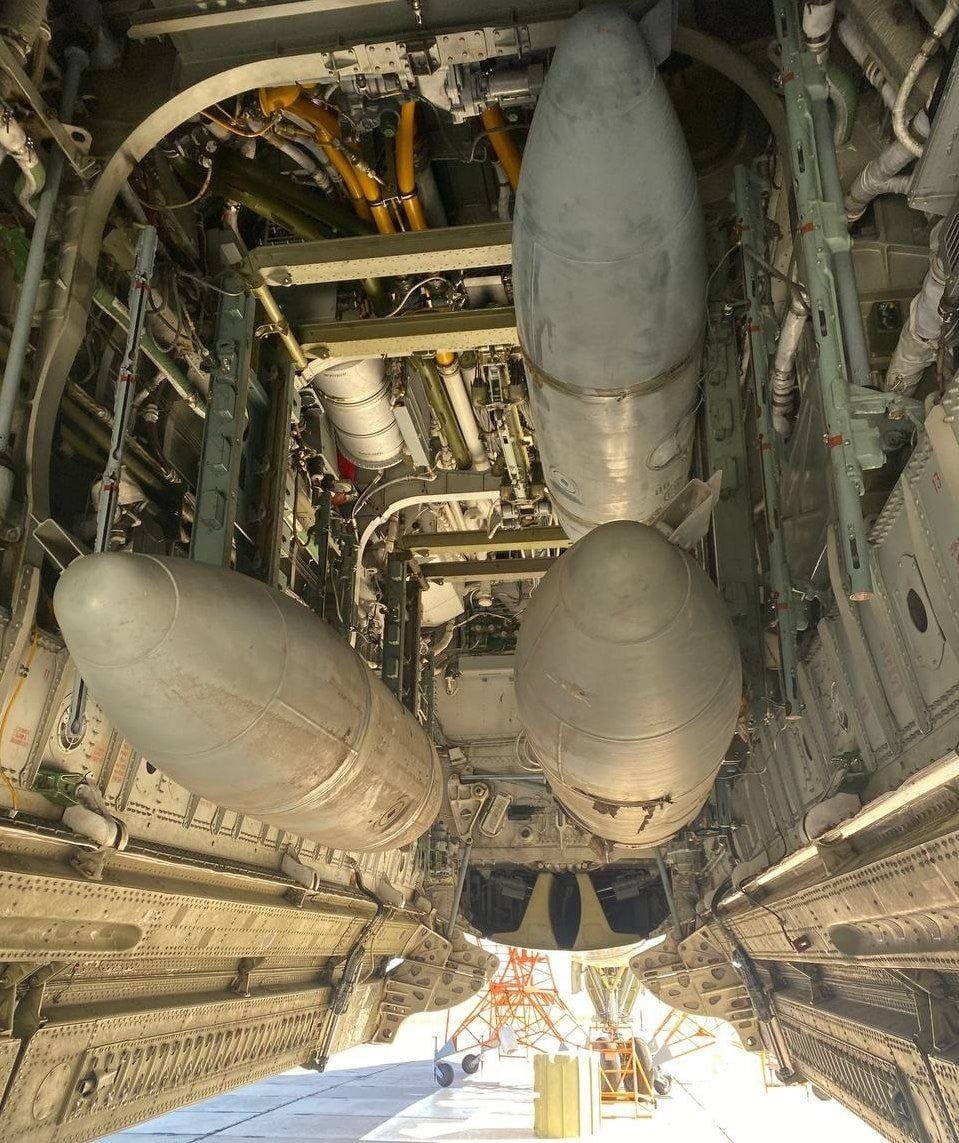Hello everybody!
A relatively short one for today, to catch with different ‘news’ (as far as they are such), and respond to certain commentary.
AIR WAR
Some of military commentators in Ukraine are questioning why do I write that, ‘Ukraine lost many aircraft and almost exhausted its supply of surface-to-air missiles’ (SAMs), plus that it’s, ‘at risk of losing dominance of its airspace’.
Up front: it should be no problem to cross-check my earlier posts and find out I actually didn’t say most of stuff in question. I did mention and comment specific PSU’s losses, but surely nothing of the rest ‘listed’ above. It’s the ‘Pentagon Leaks’ that were announcing the PSU exhausting its stocks of SAMs (especially those of Buk M1s) by around now (April 2023).
As for Ukraine losing dominance in its airspace….actually, this issue should be plain clear, or at least obvious – except one is painting own conclusions with too much patriotism.
As discussed in one of my daily reports back in March or April the last year, the issue of aerial superiority is the degree to which one of parties in the conflict is controlling the air. Essentially, there are three levels (with three corresponding ‘counter-levels’):
Aerial parity = neither side is at advantage (i.e. aerial parity for one side means the other side is in position of aerial parity, too)
Aerial superiority = means one party is denying the airspace to the other, but not entirely able to prevent it from making use of airspace (i.e. aerial superiority for one side, means aerial denial to the other)
Aerial supremacy = means one party is in complete control of airspace, the other is completely unable to make use of it (i.e. aerial supremacy for one side means aerial incapability to the other)
Cold fact is (and that regardless how painful this might sound for many Ukrainians): no matter how hard it tried, the PSU never established ‘at least’ aerial superiority over the VKS – no matter if over Ukraine, over the frontlines, or over Russia. It lost lots of aircraft and pilots while managing to prevent the VKS from establishing more than aerial superiority in the first few days of the war. Then, in early March 2022, both sides powered up their integrated air defence systems along the frontlines, and the battle for air superiority was over.
Ever since (first half of March 2022) the VKS never tried to establish more than aerial supremacy over limited sectors of the frontlines.
The PSU is light years away from being in position to manage anything similar. It simply has no means to do so.
Point is this: thanks to a combination (and emphasis is on ‘combination’, because there is no single weapons system dominating the air battle between Russia and Ukraine in this war) of tools like electronic warfare, UAVs, UCAVs and LPGMs, artillery, and air-launched anti-radar missiles, the VKS remianed capable of establishing temporary air superiority over selected sectors of the frontline ever since.
More importantly: since around mid-March, it is proving capable of doing that ever more often.
This shouldn’t mean the VKS has something like ‘continuous’ aerial superiority, 24 hours a day, 7 days a week. It means that the VKS has proven it is capable to – in cooperation with other branches of the VSRF – temporarily (say: for 5-15 minutes) suppress PSU’s air defences deployed along selected portions of the frontline (for example: Avdiivka area, along the Dnipro River in southern Kherson, and, lately, in the Bakhmut area). This is enough to enable VKS fighter-bombers (like Su-34, but perhaps Tu-22M-3-bombers, too?) to approach within the range of their precision guided munitions (PGMs; i.e. weapons like UMPK, Grom/Thunder and similar), and release these even from within the range of nearest Ukrainian-operated Buks and S-300 SAM-sites.
The PSU can’t do anything similar.
This means: the VKS is in possession of ‘at least local and temporary aerial superiority’.
Versa vice, the VKS is capable of constantly denying the use of airspace to the PSU, even if unable of entirely stopping all of its operations (especially not deeper behind the frontlines).
Don’t like it? Well, the fact you don’t like some conclusion of mine isn’t making me wrong.
Matter of fact is that in the last few days the VKS continued pounding selected ZSU positions with help of its UMPKs (and similar weapons). Indeed, latest reports from Russia are indicating that the VKS has adapted the GLONASS guidance kits and wings to ODAB-500TM fuel-air-explosive bombs. At least as important: except in the Avidiivka and other areas mentioned earlier, the VKS should now be running similar operations in the Bakhmut area, too.
Of additional interest was the photo shown the bomb bay of a Tu-22M-3 bomber, loaded with three ZB-500GD napalm containers, which appeared in the Russian social media of the last few days. This caused me to stop and think, then it’s something I have no problem to admit: I never expected that.
To make sure: Tu-22M-3s loaded with ‘free fall’ bombs is nothing new nor special. We’ve seen VKS Tu-22M-3s deploying all sorts of free fall bombs over Syria, from ODAB-250-200, via FAB-500M-54 and FAB-500M-62 all the way to FAB-3000M-54s, back in 2015-2018.
However, loading Tu-22M-3s with napalm containers….? That is ‘new’ to me, and then for the following reason.
Principal issue is that the ZB-series containers are ‘quite flimsy’: the last I’ve heard about them, MiG-23- and Su-17/20/22-pilots of the 1980s and 1990s were always warned not to fly faster than 700km/h when carrying them, because their casings were not made to survive the resulting overpressure. With other words: if the jet carrying them flew faster than around 700km/h, they could break, causing catastrophic damage to the aircraft.
Obviously, there should be no similar issues when they are carried inside the bomb bay of Tu-22M-3s. However, in the case of their deployment from such bombers, it’s the moment of release that’s going to become critical: the weapon is likely to start falling apart when released into the slipstream below the aircraft at speeds higher than 700km/, and prematurely detonate….
On the other hand: perhaps my info on napalm containers of the ZAB series is obsolete? Perhaps the GD-sub-series of the ZB-family of napalm tanks is reinforced enough for release from faster jets?
I would welcome well-substantiated info in this regards.
One way or the other: if the VKS is feeling free to start deploying Tu-22M-3s to ‘carpet bomb’ ZSU positions with stuff like ZB-500s, that’s ‘just yet more bad news for Ukraine’. It would mean that large sectors of its frontlines lack protection of Buk M1s and/or S-300s (first and foremost) – which in turn would confirm US assessments from January-February (see ‘Pentagon Leaks’) according to which the PSU was on the verge of running its stocks of such SAMs ‘dry’.
Sure, Tu-22M-3 nav/attack systems are poor (even if upgraded through the installation of the SVP-24): they’re losing precision with every mile the further they fly. However, considering short ranges from their potential bases in the Russian Federation to Ukraine, that should be less of a problem. On the contrary: the range is so short that every single bomber could be loaded to its full capacity and thus unleash up to 6,000kg of bombs (i.e. 12 ODAB-500TMs or weapons of similar calibre) in one sortie – and that with at least ‘reasonably good precision’. If anything of that hits, that’s a more powerful blow than that delivered by battery of BM-21 launchers, just for example.
(Should my explanations above be too poor for somebody to understand, feel free to post related questions. I’ll do my best to explain.)
In other news about air war: during the night from 18 to 19 April 2023, a stream of 12 Shahed-131/136s was released in the direction of Odesa. The PSU claimed 10 of these as shot down. No casualties or major damage was reported.
BATTLE OF DONBASS
Bakhmut…. Both the 3rd Assault and the 93rd Mech, ZSU, are reporting that the Wagner is meanwhile ‘completely out of Bakhmut’. Instead, Gerasimov brought in another ‘fresh’ division to this battlefield: the 20th Motor Rifle. According to sources within the ZSU, this unit – and the 98th VDV it’s accompanying – has good training, good tactics, and is consisting of (quote) ‘no suiciders’. That said, the Russians also de-facto stopped attacking. They lack the heavy firepower of classic Russian mechanised formations. Apparently, both the 20th Motor Rifle and whatever VDV reinforcements were recently sent there, belong to this ‘new-style, mobik-formations’: lots of heavy infantry, but a downsized artillery component.
That said, the VDV and VSRF still have enough artillery around the town to heavily shell Ukrainian lines, most of the time. If this is not enough, then there are now air strikes with stuff like the UMPKs, as mentioned above.
In turn, the lack of continuous Russian assaults is enabling the ZSU to, gradually, start gaining initiative. In this regards, Ukrainians are making new experiences: the VDV mobiks are stubborn in defence, but nobody is shooting at them if they retreat. If necessary, they are free to do so.
Elsewhere… and I’m really not sure about the precise area in this regards…
Since around 4-5 days, there are lots of rumours about some sort of an Ukrainian ‘counteroffensive’. However, most of what I’ve got to hear or see so far is not making much sense – primarily because reports in question are mentioning a ‘much too wide’ zone. For example:
One group of sources is mentioning the area ‘between Kamyanske (Dnipro) and Orikhiv’, and reporting the village of Podkove as liberated.
Another group of sources is mentioning the Hulaypole area and listing villages of Marfopil, Stepanivka, Mezhyrich, and Reshetylivske as liberated.
Third group of sources is discussing the Polohy area, and
The fourth the Toretsk-Horlivka area.
Generally, there are no details, no photos, no videos, nothing one could use to geo-locate, cross-check and confirm – or deny – any such reports. Only ‘rumours intelligence’ (RUMINT). Moreover, many of villages named above (I mean those in the southern Zaporizhzhya) are known to have been ‘no-man’s land’ (or, in terminology of the social media: ‘grey zone’) – for months.
Keeping in mind the general lack of patience and ignorance for weather conditions by most of people monitoring this conflict in the social media, or such facts like that the ZSU is still ‘months away’ from having enough well-trained troops (and commanders for them), enough artillery ammunition, enough air defence systems, enough spare parts etc. to run a big counteroffensive….and pending availability of additional information, conclusion is on hand that either nothing is happening at all, or the ZSU and the VSRF are merely vying for better tactical positions.
The only reason I’m mentioning all of this at all is that this morning, reports surfaced in the Russian social media that the VSRF is calling the population of southern Zaporizhzhya about 10-15km behind the frontline to evacuate their homes. Thus, ‘perhaps something is going on’, after all…?






Hello from Odesa)) We were noisy, air defense was working until 3 o'clock in the morning. They hunted for flying mopeds over the sea. Now we have a lot of rain in the south. Too much. This has not happened for a long time. God says take your time!
Tom,
It is hard to see how ZSU can carry succeful counterofence without robust air defence.